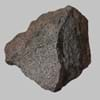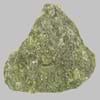Definition
Latite is an igneous, volcanic rock, with aphanitic-aphyric to aphyric-porphyritic texture
Anorthosite is a granular igneous rock composed largely of labradorite or plagioclase
Discoverer
Unknown
Unknown
Etymology
From the Latin word latium
From French anorthose plagioclase + -ite1
Class
Igneous Rocks
Igneous Rocks
Sub-Class
Durable Rock, Medium Hardness Rock
Durable Rock, Medium Hardness Rock
Other Categories
Fine Grained Rock, Opaque Rock
Coarse Grained Rock, Opaque Rock
Texture
Aphanitic to Porphyritic
Foliated, Glassy
Color
Black, Brown, Colourless, Green, Grey, Pink, White
Black, Bluish - Grey, Brown, Green, Grey, Light Greenish Grey, Pink, White
Durability
Durable
Durable
Appearance
Rough
Layered, Banded, Veined and Shiny
Interior Uses
Decorative Aggregates, Entryways, Interior Decoration
Decorative Aggregates, Floor Tiles, Homes, Interior Decoration
Exterior Uses
As Building Stone, As Facing Stone, Garden Decoration, Office Buildings
As Building Stone, As Facing Stone, Garden Decoration
Other Architectural Uses
Curbing
Curbing
Construction Industry
As a Flux in the Production of Steel and Pig Iron, As a Sintering Agent in Steel Industry to process Iron Ore, As Dimension Stone, Cement Manufacture, for Road Aggregate, Making natural cement, Manufacture of Magnesium and Dolomite Refractories
As Dimension Stone, Cement Manufacture, for Road Aggregate
Medical Industry
Not Yet Used
Not Yet Used
Antiquity Uses
Artifacts, Monuments, Sculpture
Artifacts, Sculpture, Small Figurines
Commercial Uses
An Oil and Gas Reservoir, As a Feed Additive for Livestock, Metallurgical Flux, Soil Conditioner, Source of Magnesia (MgO)
Creating Artwork, Curling
Types
Rhomb porphyries
Proterozoic Anorthosite and Archean Anorthosite
Features
Host Rock for Lead
Generally rough to touch, Is one of the oldest rock
Archaeological Significance
Monuments
Used
Not Yet Used
Famous Monuments
Data Not Available
Not Applicable
Famous Sculptures
Data Not Available
Not Applicable
Pictographs
Used
Not Used
Petroglyphs
Used
Not Used
Formation
Latite is a fine-grained, hard rock which is a type of metasomatite, essentially altered basalt. It forms with or without crystallization, either below the surface as intrusive rocks or on the surface as extrusive rocks.
Anorthosite is a phaneritic, intrusive igneous rock which is characterized by a predominance of plagioclase feldspar which is almost 90–100%, and a minimal mafic component.
Mineral Content
Alkali feldspar, Biotite, Plagioclase, Pyroxene
Amphibole, Clinopyroxene, Ilmenite, Magnetite, Olivine, Orthopyroxene
Compound Content
CaO, Cl, MgO
Ca, CaO, Chromium(III) Oxide, MgO, Sulfur Trioxide
Types of Metamorphism
Burial Metamorphism, Cataclastic Metamorphism
Cataclastic Metamorphism, Contact Metamorphism
Types of Weathering
Biological Weathering, Chemical Weathering, Mechanical Weathering
Biological Weathering
Types of Erosion
Chemical Erosion, Water Erosion, Wind Erosion
Chemical Erosion, Wind Erosion
Grain Size
Fine Grained
Coarse Grained
Fracture
Conchoidal
Irregular
Porosity
Very Less Porous
Less Porous
Luster
Subvitreous to Dull
Pearly to Subvitreous
Compressive Strength
Not Available
Cleavage
Perfect
Irregular
Toughness
2.7
Not Available
Specific Gravity
2.86
2.62-2.82
Transparency
Translucent
Translucent
Density
2.8-2.9 g/cm3
2.7-4 g/cm3
Resistance
Heat Resistant, Pressure Resistant
Heat Resistant, Impact Resistant, Pressure Resistant, Scratch Resistant, Wear Resistant
Deposits in Eastern Continents
Asia
Not Yet Found
Not Yet Found
Africa
Not Yet Found
Not Yet Found
Europe
Bulgaria
Bulgaria, France, Germany, Greece, Hungary, Italy, Latvia, Lithuania, Malta, Poland, Portugal, Romania, Slovenia, Spain, Sweden, The Czech Republic
Others
Not Yet Found
Not Yet Found
Deposits in Western Continents
South America
Not Yet Found
Bolivia, Colombia
Deposits in Oceania Continent
Australia
Not Yet Found
Central Australia, South Australia, Western Australia
All about Latite and Anorthosite Properties
Know all about Latite and Anorthosite properties here. All properties of rocks are important as they define the type of rock and its application. Latite and Anorthosite belong to Igneous Rocks.Texture of Latite is Aphanitic to Porphyritic whereas that of Anorthosite is Foliated, Glassy. Latite appears Rough and Anorthosite appears Layered, Banded, Veined and Shiny. The luster of Latite is subvitreous to dull while that of Anorthosite is pearly to subvitreous. Latite is available in black, brown, colourless, green, grey, pink, white colors whereas Anorthosite is available in black, bluish - grey, brown, green, grey, light greenish grey, pink, white colors. The commercial uses of Latite are an oil and gas reservoir, as a feed additive for livestock, metallurgical flux, soil conditioner, source of magnesia (mgo) and that of Anorthosite are creating artwork, curling.










